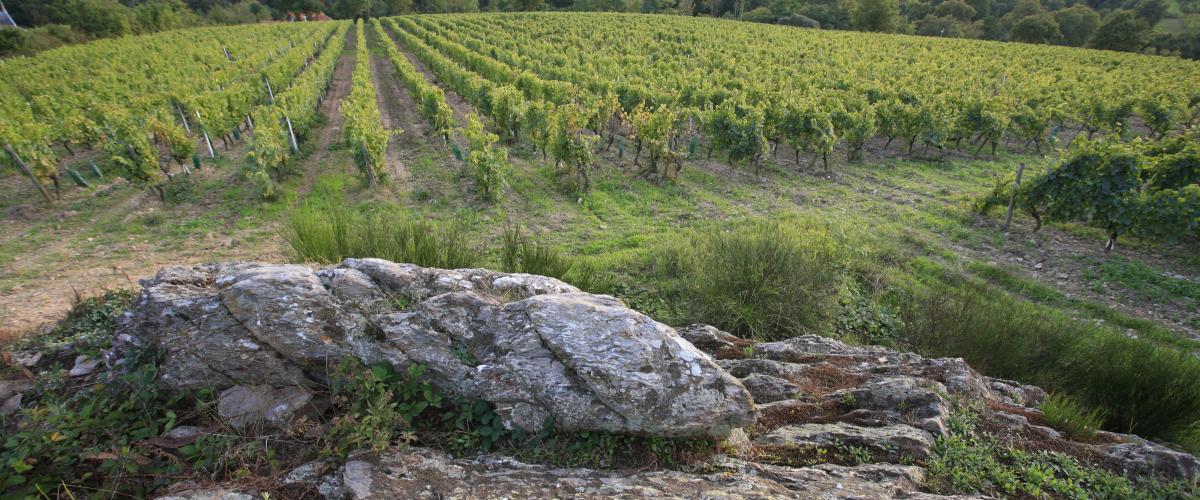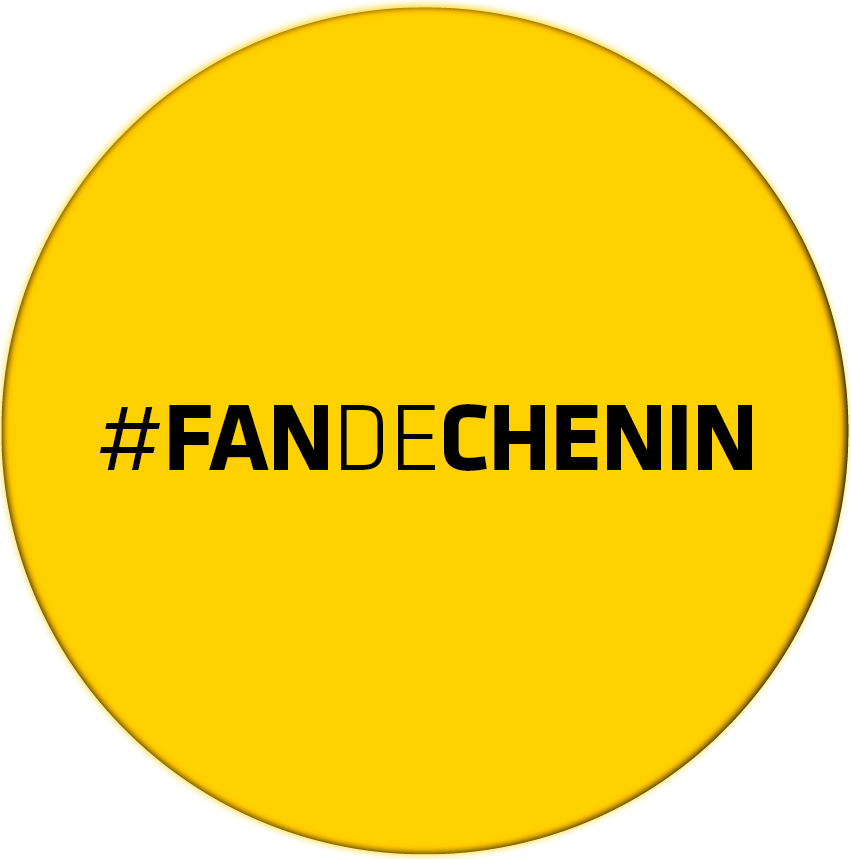The chenin today

In 2019, the 1st International Congress on Chenin Blanc (CICB) had as its theme « Chenin in a changing environment ». This new environment is societal, economic, commercial and climatic. It is therefore the future of this grape variety that is currently being played out.
Thus, the ability of Chenin to adapt to climate change becomes a subject. Attention to drought, frost, disease and other pests is increasing.
Stylistically, in the media, commercially, Chenin is gradually becoming a trendy and even alternative white. Indeed, while it benefits from a growing white wine market, its uniqueness is increasingly valued by both great amateurs and simple discoverers.
In short, the time has come to mobilize but also to grow the community of Chenin fans beyond its current production and consumption areas. The mention of this grape variety on wine labels is more than ever strategic to install it in the benchmarks and purchasing criteria, in addition to brands and geographical indications.
A grape variety with great potential
-
As
Chenin produces very elegant wines, with great liveliness, due to its high natural acidity, but also great complexity, due to its wide aromatic palette (acacia, hawthorn,
lime blossom, quince, pear, mirabelle plum, citrus fruits, orange peel, guava, honey or sweet spices). It now perfectly meets the growing demand for fresh wines, which can be enjoyed young but also after several years of aging. Through its own characteristics but also the talent of the winegrowers who sublimate it, this grape variety is gradually contributing to the emergence of a new generation of great dry whites in the Loire Valley, at prices of €15-30 including tax in France and $40-50 in the USA.
-
In diversity
Depending on the terroirs (limestone, shale) but also the vintages and the growing conditions, Chenin allows the production of multiple wines, sparkling or not, dry, semi-dry, sweet or still syrupy. Few grape varieties offer such a wide range of possibilities, with various markets and targets. For example, 60-65% of Chenin du Val de Loire is in fine bubbles, 25-30% in dry or semi-dry whites and 10-15% in sweet-sweet wines.
-
In originality
Chenin draws its originality in particular from its versatility, one of its most famous character traits but also the most commented on, even debated. Hyper-sensitive to the terroir in which it is planted, to the methods of management, to the vintage effect but also to the choices of the winegrower in terms of the date of harvest but also of vinification, this grape variety seems to be able to give as many wines as it there are scenarios. Ultimately, the leitmotif of Chenin is to never tire and always surprise...
A grape variety to be (re)discovered
-
Beyond its current production areas
Of the almost 35,000 ha of Chenin planted worldwide, 85% is found in just 2 countries: South Africa (55%) and France (30%). We can even speak of hyper-regional concentration with 30% of the world's Chenin located in the Loire Valley. Arriving far behind: Argentina (6%) and the United States (5.8%). By comparison, Chardonnay exceeds 200 000 Ha spread over more than 40 countries.
-
Beyond its current consumption areas
If the production of Chenin is limited to a few countries, and even certain regions of the world, its consumption is in the same case. 80% of French Chenin bottles are sold in France. The remaining 20% is exported to a few countries, mainly European, and mainly to Germany. As for African Chenin, even if it is mainly exported, its consumers are also concentrated in Europe and in particular in Great Britain.
-
Beyond the usual white wines
Great chefs and sommeliers today declare and share their passion for this grape variety which is still largely unknown and sometimes misjudged. Pascaline LEPELTIER, best sommelier of France 2018, has even become its emblematic ambassador, considering that it is "the greatest variety". In terms of food and wine pairings, the growing success of vegan cuisine is an increasing advantage.
However, many consumers of white wines do not yet know it. In addition, among those who already know it, many have not yet experienced all the diversity in possible types and styles of wine. In South Africa, the term “old vines” exists to enhance the oldest plots. In this country, marketing studies invite us to distinguish the “rich” and the “fresh” as the first key to entering the world of Chenin. In the Loire Valley, most Chenin production is AOP. However, it is the AOP which is traditionally and only put forward as a trigger for interest and purchase on the main labels of cuvées made from Chenin. However, the Chenin designation is now gradually positioned alongside appellation denominations and own brands, knowing that for export the reference to the grape variety is in itself strategic.
A grape variety to perpetuate and adapt
-
Due to diseases but now also to climate change
Chenin must be managed with regard to a number of diseases and pests. It is very sensitive to powdery mildew, gray and acid rot, and wood diseases. It is susceptible to grape worms, burls and excoriosis. On the other hand, it is not afraid of black rot, mildew, anthracnose or Pierce's disease.
Chenin is quite sensitive to scalding and toasting. In France, the National Institute for Agronomic Research (INRA) is currently working on scenarios for adapting to global warming at the scale of French vineyards and the Tours laboratory of the National Center for Scientific Research (CNRS) is studying even local strategies in conjunction with winegrowers We can already note the very good vegetative adaptation of Chenin to tropical conditions. It is found elsewhere in India. As for the Chenin from South Africa, it has demonstrated a real ability to acclimatize to arid weather.
-
By setting up conservatories and conducting studies
Chenin must retain all its varietal and intra-varietal diversity, which is considered remarkable by ampelographers. The future of the grape variety depends on it. Setting up a tank
genetics makes it possible to preserve, observe and list this natural diversity of Chenin before it disappears.
Prospecting in different geographical areas offers an additional chance of obtaining Chenin individuals with a different genetic base. The work prior to any prospecting is a census of the oldest and non-clonal plots. This is how France carried out prospecting work in South Africa in 2019. After health tests, the selected virus-free strains are shipped to France, and more specifically to the Loire Valley.
Thanks to conservatories, selection programs are possible. They result in the approval and multiplication of one or more new clones distributed in the certified category.
